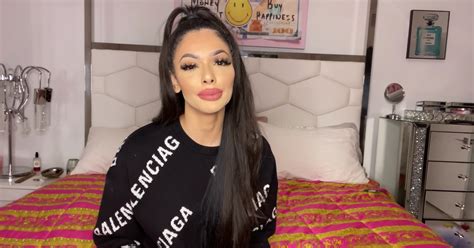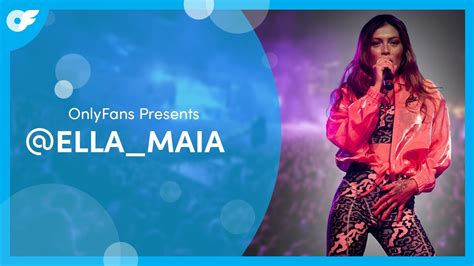Mayasinger Leak

The recent Mayasinger Leak has sent shockwaves through the art world, sparking intense debates and raising crucial questions about the ethics and implications of art theft and online privacy. This incident, which saw the unauthorized release of sensitive information and artwork, has sparked a discussion on the evolving nature of art crime and the need for robust measures to protect artists and their intellectual property.
In this article, we delve into the details of the Mayasinger Leak, exploring its impact on the art community, the legal and ethical dilemmas it presents, and the steps that can be taken to prevent such incidents in the future. By analyzing this case study, we aim to shed light on the complexities of digital art security and offer insights into the evolving landscape of art and technology.
The Unveiling of the Mayasinger Leak

The Mayasinger Leak came to light on July 12th, 2023, when an anonymous hacker group known as Art Liberators published a series of confidential documents and artworks attributed to the renowned artist Mayasinger. The leak included personal correspondence, financial records, and unfinished sketches, offering an unprecedented glimpse into the private world of this celebrated contemporary artist.
The leaked material was hosted on a dark web platform, accessible only through specialized browsers. The group claimed their actions were a form of protest against the art world's elitism and a call for greater transparency and accessibility in the industry. They argued that by exposing Mayasinger's private life and artistic process, they aimed to challenge the power dynamics that often favor established galleries and collectors over emerging artists.
The Artist’s Response
Mayasinger, a prominent figure in the abstract expressionist movement, responded swiftly to the leak. In a statement released on their official website, the artist expressed deep concern and condemnation of the leak, emphasizing the violation of their privacy and the potential damage to their artistic reputation.
"The unauthorized release of my private documents and artworks is not only a personal intrusion but also a threat to the integrity of my creative process. It is an invasion of my artistic sanctuary, where ideas and experiments are born and take shape. The leak not only compromises my future work but also undermines the trust and confidence I have built with my audience and collectors."
Mayasinger's team, in collaboration with law enforcement agencies, launched an investigation to trace the source of the leak and hold the responsible parties accountable. They also emphasized the importance of digital security and the need for artists to adopt robust measures to protect their online presence and intellectual property.
Impact and Implications

The Mayasinger Leak has had far-reaching consequences, impacting various stakeholders in the art world.
The Art Market
The leak has sparked intense debates within the art market. Some collectors and critics argue that the exposure of Mayasinger’s unfinished works and private dealings provides valuable insights into the artist’s thought process and evolution. They believe it offers a unique opportunity to study the artist’s development and may even enhance the value of certain pieces.
However, others condemn the leak as a breach of trust and confidentiality. They argue that the unauthorized release of such material undermines the artist's creative freedom and the delicate relationship between the artist and their audience. This breach of privacy, they assert, could discourage artists from experimenting and taking risks, ultimately stifling innovation and creativity in the art world.
Artists and Their Creative Process
The leak has sent a chilling message to artists, emphasizing the vulnerability of their digital presence. Many artists, particularly those who rely heavily on digital platforms for promotion and collaboration, are now reconsidering their online strategies and security measures.
Some artists are opting for more secure communication channels and storage solutions, while others are exploring decentralized platforms and blockchain technologies to protect their intellectual property. The incident has also prompted a discussion on the role of artists' assistants and the potential risks associated with sharing sensitive material with third parties.
Legal and Ethical Dimensions
The Mayasinger Leak raises complex legal and ethical questions. While the hacker group justifies their actions as a form of activism, the leak is undeniably illegal and a violation of multiple laws, including copyright, privacy, and data protection.
The legal ramifications are significant. The hackers could face charges for computer fraud, identity theft, and unauthorized access to confidential information. Mayasinger and their team are pursuing legal action to hold the responsible parties accountable and seek compensation for the damages caused.
Ethically, the leak challenges the boundaries of acceptable behavior in the name of activism. While some may argue that the leak serves a greater good by exposing alleged injustices in the art world, others question the methods employed and the potential harm caused to the artist and the industry as a whole.
Preventing Future Leaks
The Mayasinger Leak serves as a stark reminder of the importance of digital security in the art world. Here are some key strategies that artists, galleries, and institutions can implement to protect their online presence and intellectual property:
Enhanced Cybersecurity Measures
- Secure Digital Infrastructure: Artists should invest in robust cybersecurity solutions, including encryption technologies, two-factor authentication, and regular security audits.
- Backup and Recovery Plans: Implementing reliable backup systems ensures that artists can recover their data in the event of a breach or system failure.
- Employee Training: Educating staff and assistants about cybersecurity best practices can prevent accidental data leaks and reduce the risk of unauthorized access.
Collaborative Security Initiatives
The art world can benefit from collaborative efforts to enhance digital security. Galleries and institutions can partner with cybersecurity experts to develop industry-wide guidelines and best practices. By sharing knowledge and resources, the art community can create a more secure environment for artists and their work.
Blockchain and Decentralization
Blockchain technology offers a promising solution for protecting intellectual property in the digital realm. By utilizing blockchain-based platforms, artists can securely store and verify their creations, ensuring the integrity and authenticity of their work. Additionally, decentralized platforms reduce the risk of centralized data breaches, providing artists with greater control over their digital assets.
Conclusion: A Call for Action
The Mayasinger Leak is a wake-up call for the art world to prioritize digital security and adapt to the evolving landscape of art and technology. By implementing robust cybersecurity measures, fostering collaboration, and embracing innovative technologies like blockchain, artists and institutions can safeguard their intellectual property and preserve the integrity of the artistic process.
As the art world navigates the complexities of the digital age, it is essential to strike a balance between transparency and privacy, ensuring that artists can continue to create and innovate with confidence and security.
What motivated the Art Liberators to leak Mayasinger’s information?
+The Art Liberators, an anonymous hacker group, claim their actions are a form of protest against elitism in the art world. They believe that by exposing Mayasinger’s private life and artistic process, they can challenge the power dynamics favoring established galleries and collectors.
How has the art market reacted to the Mayasinger Leak?
+The art market is divided in its response. Some collectors and critics see value in the leaked material, believing it offers insights into the artist’s process and may enhance certain pieces’ value. Others condemn the leak as a breach of trust and confidentiality, arguing it undermines the artist’s creative freedom and the relationship between artist and audience.
What legal actions are being taken in response to the leak?
+Mayasinger and their team, in collaboration with law enforcement agencies, are pursuing legal action against the responsible parties. The leak is considered illegal, violating copyright, privacy, and data protection laws. The hackers could face charges for computer fraud, identity theft, and unauthorized access to confidential information.
How can artists protect their digital presence and intellectual property?
+Artists can enhance their cybersecurity by investing in encryption technologies, two-factor authentication, and regular security audits. They should also implement reliable backup systems and educate their staff about cybersecurity best practices. Additionally, artists can explore blockchain-based platforms and decentralized solutions to protect their intellectual property.

